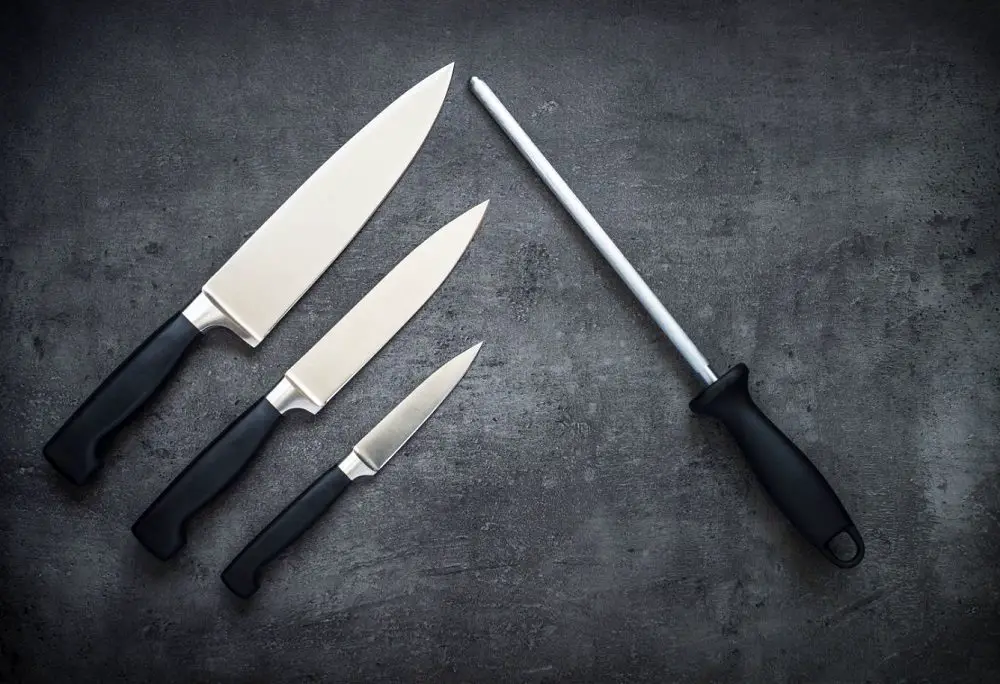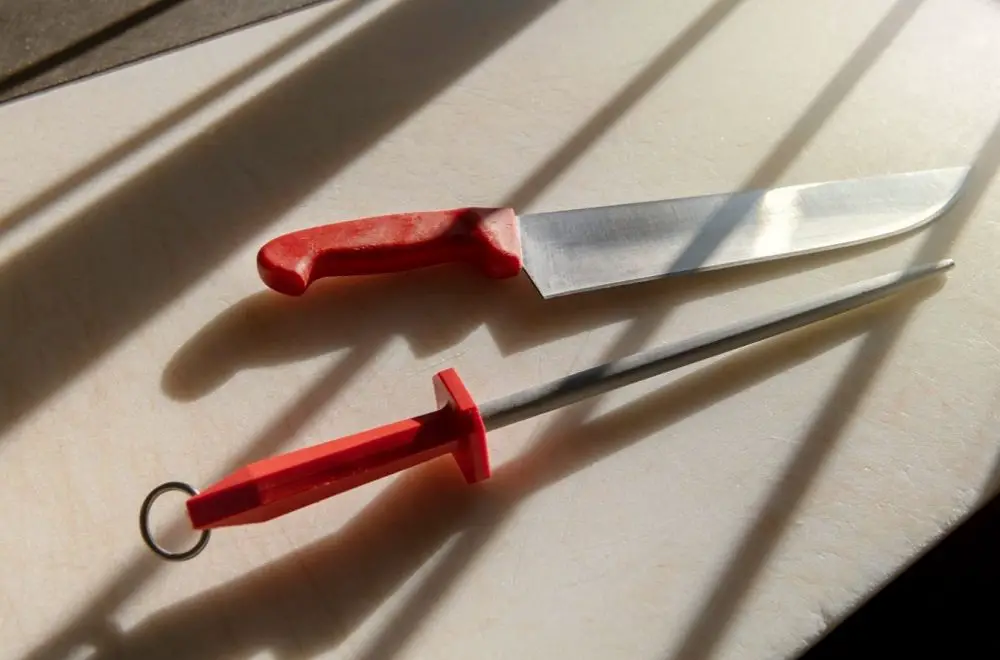SHTFPreparedness may collect a share of sales or other compensation from the links on this page.
When it comes to survivalism, the knife is arguably the most important of all the various tools and pieces of kit put together. This is because the knife is the tool that can make almost anything, from shelter to other tools, and is often the difference between a serious prepper and a weekend warrior.
Many people choose to focus on guns, bullets, and other flashy and expensive solutions when it comes to survivalism, and in some ways, this is natural, as people will gravitate towards products that seem to offer the most protection and security. However the humble knife is the ultimate tool every survivalist should be well trained with, not only for bushcraft and other valuable uses, but self-defense also.
Part of the issue with knives is that there are so many of them, from countless different styles of the blade and handle, to brands and materials which makes buying a good knife a surprisingly research-heavy process.
This is a good investment of time of course, as a great knife is of paramount importance, but sometimes finding good information about what knife is best for you can be difficult as there is an awful lot of marketing speak and jargon to wade through.
Thankfully, we’ve got you covered. In this guide, we’re going to look at the difference between two of the most common and popular types of knives, the drop point knife and the clip point knife.
Both of these knives are very effective, but there are key differences between them and each has its own series of strengths and weaknesses which can make choosing the correct one really important but also tricky.
We’re going to look at all of these factors to help make sure you end up with the perfect knife for your needs, whether the SHTF or not.
But first, let’s take a look at why blade shapes are so important.
Why Are Blade Shapes Important?

The shape of your blade is very important and is a key element of the overall design of the knife. There are many different elements to knife design, from the material of the knife, to the handle, its tang, and of course the shape of the blade.
To people less experienced with knives and bushcraft, blade shape is easy to overlook, as many look more or less the same.
But each knife and blade shape is crafted for a specific purpose and not all blades will be optimal for all uses.
Some blades are better for hunters, designed for skinning animals and dealing with hides, while some are better for dealing with wood and camp tasks, while others are better for self-defense scenarios.
While it’s definitely possible to use knives for purposes other than what they are designed for, it does add risk, both to you as its user and to the integrity of the blade itself.
For example, a knife designed for skinning animals may be prone to chipping or breaking altogether if used for heavy duty wood work, making it far worse for skinning should you later need to do this.
Using a knife for its intended purpose will make the task, and your life, much easier, but if you use them for tasks they aren’t designed for, the opposite often applies.
What Are Clip Point Knives?
Clip point knives are one of the most common blade types, and it’s likely you will have come across this type of blade or seen it several times either in popular media or in real life without ever knowing its actual name.
The most recognisable attribute of this blade type is the unsharpened rear edge of the knife, which runs from the handle to roughly halfway up the blade.
From here the blade slopes downwards and dips to the tip of the blade. This section is quite dramatic and looks as if the front of the knife has been clipped away, which is where this type of blade takes its name from.
Some brands and designs refer to this part of the knife as the ‘cut out’ and it can take various forms, from subtle curved designs to dramatic straight edges and angles. Clip point blades are very typical in pocket knives and fixed knives, and one of the most famous examples of this blade type can be seen in the infamous bowie knife, as seen in movies like Rambo and other iconic Hollywood movies.
Part of the reason for their popularity is their versatility, and these blades can handle various camp related tasks, as well dressing, skinning and other essential bushcraft and survival tasks.
As all around knives, these make an excellent choice, but there are drawbacks. The main one being that the clip point knife naturally has a slim and somewhat weaker tip, which makes it easier to break in comparison to other designs such as the drop point. The added precision of a clip point is the reason why this knife is still very useful despite this weakness.
Some of the pros and cons are as follows;
Pros
- Very sharp
- Very controllable
- Versatile
- Can pierce very effectively
- Can cut and slice well
- Precise
Cons
- Weaker point
- Not as effective for skinning or heavy duty tasks like batoning
What Are Drop Point Knives?

In many ways, the drop point knife is similar to the clip point knife, as it’s incredibly popular and is a great all rounder knife. Its features do make it particularly popular among hunters however and there are several reasons for this which we’ll touch on later.
Like the clip point, the back edge of the blade is unsharpened, and this runs from the handle down most of the blade.
Near the top end of the blade however there is a smaller, less pronounced cut out or ‘drop’ which is what makes this blade a favorite among hunters and bushcrafters. It has a controllable and precise point but isn’t as vulnerable as clip point knives.
The precision this offers is key for hunters as it makes skinning much tidier and easier, helping to prevent nicking organs which can spoil meat, and leading to cleaner cuts.
The point isn’t as fine with these knives which mean more of the blade can be leveraged, which speeds up the process of skinning also.
While there are some who claim that drop point knives aren’t well suited to camp related tasks, there are other experienced bushcrafters who regularly use drop points for these tasks, which indicates how versatile these knives are.
As long as the knife is quality and you know its limits, it will be able to handle a lot of different tasks.
Pros
- Stronger
- Controllable point
- Larger cutting area
Cons
- Point isn’t as sharp as a clip point knife
- Can’t pierce as well as a clip point
What Are the Differences Between Drop Point and Clip Point Knives?
Now that each knife and its qualities have been looked at, we can discuss the key differences between these blades.
Shape – The clip point knife has a much more pronounced dip or cut out than a drop point knife, which has a more gentle drop towards the tip that is far less pronounced.
Function – Both are excellent all rounder knives for outdoor work and bushcraft, but there are some key differences. The drop point is better for hunters, ideal for skinning and dressing. Clip point knives are better for more general tasks, but aren’t as useful for field dressing.
Aesthetic – Both knives look beautiful especially when finished by a quality brand. What you prefer is really a matter of personal taste as both are quite similar with just a few small key differences.